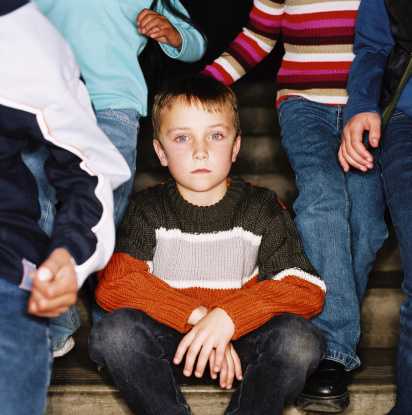Featured Topic: Bullying Research
Youth Bullying: What Does the Research Say?

Bullying is one type of youth violence that threatens young people’s well-being. Bullying can result in physical injuries, social and emotional difficulties, and academic problems. The harmful effects of bullying are frequently felt by others, including friends and families, and can hurt the overall health and safety of schools, neighborhoods, and society.
CDC defines bullying as any unwanted aggressive behavior(s) by another youth or group of youths, who are not siblings or current dating partners, involving an observed or perceived power imbalance and is repeated multiple times or is highly likely to be repeated. Bullying may inflict harm or distress on the targeted youth including physical, psychological, social, or educational harm.1 A young person can be a perpetrator, a victim, or both (also known as a “bully/victim”).
Bullying can occur in-person and through technology. Electronic aggression, or “cyber-bullying,” is bullying that happens through email, chat rooms, instant message, a website, text message, or social media.2
CDC works to understand and prevent bullying before it starts. Research is still developing and helps us to better understand and prevent bullying. School-based bullying prevention programs are widely implemented but not always evaluated. While emerging research indicates that zero-tolerance policies do not effectively prevent bullying3, it also suggests promising school-based program elements such as
- Improving supervision of students
- Using school rules and behavior management techniques in the classroom and throughout the school to detect, address, and provide consequences for bullying
- Having a whole school anti-bullying policy and enforcing that policy consistently
- Promoting cooperation among different professionals, and between school staff and parents 4
CDC Bullying Research and Resources
The following resources provide additional information on bullying, electronic aggression, youth violence prevention, and safe schools.
- Bullying Surveillance Among Youths: Uniform Definitions for Public Health and Recommended Data Elements, Version 1.0 [PDF 8.64MB]
- Bullying Compendium: Assessment Tools for Measuring Bullying [PDF 21.7MB]
- Understanding Bullying Fact Sheet [PDF 184KB]
- Bullying and Suicide: A Public Health Approach
- The Relationship Between Bullying and Suicide: What We Know and What it Means for Schools [PDF 4.78MB]
- The Bully – Sexual Violence Pathway in Early Adolescence [PDF 491KB]
CDC Youth Violence Prevention Resources
- Division of Violence Prevention, Youth Violence Prevention
- Striving to Reduce Youth Violence Everywhere (STRYVE)
- VetoViolence – Youth Violence
- National Centers of Excellence in Youth Violence Prevention
- The Community Guide – Violence Prevention: School-Based Programs
- Division of Adolescent and School Health
- Safe Youth. Safe Schools
Additional Federal or Partner Resources
- StopBullying.gov – English website
- Espanol.StopBullying.gov – Spanish website
- StopBullying.gov’s Online Bullying Prevention Course (Continuing education available)
- Blueprints for Healthy Youth Development
- SAMHSA’s National Registry of Evidence-based Programs and Practices (NREPP)
- Office of Juvenile Justice and Delinquency Prevention: Model Programs Guide
- National Academies of Sciences, Engineering, and Medicine: Preventing Bullying Through Science, Policy, and Practice
References
- Gladden RM, Vivolo-Kantor AM, Hamburger ME, Lumpkin CD. Bullying Surveillance Among Youths: Uniform Definitions for Public Health and Recommended Data Elements, Version 1.0. Atlanta, GA; National Center for Injury Prevention and Control, Centers for Disease Control and Prevention and U.S. Department of Education; 2013. Available from http://www.cdc.gov/violenceprevention/pdf/bullying-definitions-final-a.pdf [PDF 8.64MB].
- David-Ferdon C, Hertz MF. Electronic media and youth violence: A CDC issue brief for researchers. Atlanta, GA: Centers for Disease Control and Prevention; 2009. Available from http://www.cdc.gov/ViolencePrevention/pdf/Electronic_Aggression_Researcher_Brief-a.pdf [PDF 11MB].
- National Academies of Sciences, Engineering, and Medicine. Preventing Bullying Through Science, Policy, and Practice. Washington, DC: The National Academies Press; 2016. Available from http://sites.nationalacademies.org/DBASSE/BCYF/Science_on_Bullying/index.htm.
- Farrington DP, Ttofi MM. School-based programs to reduce bullying and victimization. Systematic review for The Campbell Collaboration Crime and Justice Group; 2010. Available from www.ncjrs.gov/pdffiles1/nij/grants/229377.pdf [PDF 270KB]
- Page last reviewed: May 12, 2017
- Page last updated: May 12, 2017
- Content source:


 ShareCompartir
ShareCompartir
